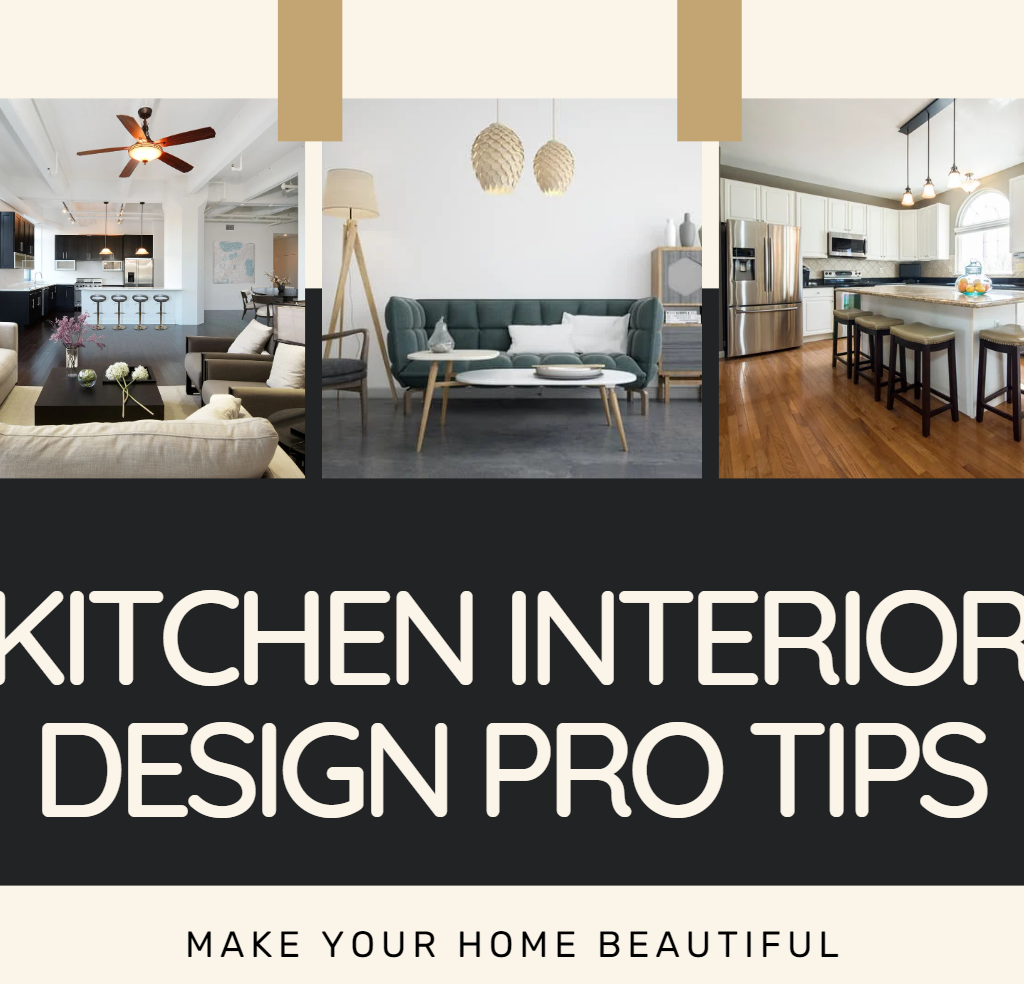
Kitchens are the heart of a home, and crafting a well-designed, functional, and stylish kitchen is essential for any modern living space. A well-executed interior design plan can make your kitchen not only a space for cooking but also a hub for socializing and entertaining. In this comprehensive guide, we share expert interior design tips for creating your dream kitchen. With the help of myNivasa Interiors, you can transform your kitchen into a space that suits your lifestyle and reflects your unique personality.
1. Assess Your Kitchen Layout and Space Planning
Before diving into the aesthetic aspects of your kitchen design, it’s crucial to consider the functionality and ergonomics of the space. An efficient layout ensures that your kitchen is easy to navigate and tailored to your specific needs. Here are some key factors to consider when planning your kitchen layout:
1.1. Zone Your Kitchen
Identify the key areas in your kitchen, such as food preparation, cooking, and cleaning zones. Place related items and appliances in close proximity to each other to create a seamless workflow. For instance, your refrigerator, pantry, and countertop should be near the food preparation zone, while your stove, oven, and microwave should be located in the cooking area.
1.2. Optimize Traffic Flow
Ensure that there is sufficient space between different zones and cabinetry runs, allowing for easy movement and access. In general, paths through the kitchen should be at least 1 meter wide, while cooking zones should have a minimum width of 1.25 meters. Additionally, consider the direction of traffic within your kitchen and how it connects to adjacent rooms or outdoor spaces.
1.3. Prioritize Accessibility and Safety
Design your kitchen with safety and accessibility in mind, especially if you have young children or individuals with mobility limitations. Make sure that frequently used items are easily reachable, and avoid placing hot or dangerous appliances in high-traffic areas to minimize the risk of accidents.
2. Select the Perfect Color and Finish for Your Kitchen Cabinets
The choice of color and finish for your kitchen cabinets can significantly impact the overall look and feel of the space. To select the right combination, consider the following factors:
2.1. Evaluate Natural Light and Room Position
The amount of natural light your kitchen receives and its location within your home can influence the most suitable cabinet colors. Light-colored cabinets can brighten up a darker space, while darker hues can create a cozy atmosphere in a well-lit room.
2.2. Consider Texture and Material
Introducing textured or wood grain finishes can add depth and visual interest to a minimalist or contemporary kitchen. Additionally, choosing materials that complement the architectural style of your home can create a cohesive design throughout your living space.
2.3. Balance Bold Colors
If you’re drawn to vibrant colors for your kitchen cabinets, think carefully about their long-term appeal and potential impact on resale value. To avoid future regret, consider incorporating bold colors on a kitchen island or through accessories and accents that can be easily updated or replaced.
3. Choose the Ideal Worktops for Your Kitchen
The right kitchen worktops can elevate the design of your space while providing durability and functionality. Consider these tips when selecting the best material for your countertops:
3.1. Complement Your Cabinetry
Choose worktop materials that harmonize with your cabinet colors and finishes. For instance, you can mix high-gloss cabinets with warm wooden countertops, or pair marble worktops with traditional cabinetry in a period home.
3.2. Evaluate Practicality and Maintenance
Evaluate the practicality and maintenance requirements of different worktop materials based on your lifestyle and cooking habits. Some materials, such as granite and quartz, offer excellent durability and stain resistance, while others, like wood or laminate, may require more upkeep.
3.3. Add Interest with Mixed Materials
Incorporate multiple worktop materials within your kitchen design to create visual interest and define different areas or zones. For example, you could use a wooden worktop on your kitchen island and a contrasting stone or composite material for the remaining countertops.
4. Incorporate Thoughtful and Functional Storage Solutions
Integrating clever storage solutions into your kitchen design can dramatically improve its functionality and organization. Consider these storage tips for a clutter-free and efficient kitchen:
4.1. Optimize Drawer and Cabinet Space
Deep drawers can be more practical than standard floor cabinets, making it easier to access items at the back. Consider incorporating custom inserts or organizers to further improve the functionality of your drawers and cabinets.
4.2. Plan Storage According to Usage
Position storage spaces for specific items, such as spices and dry foods, close to the areas where they’re most frequently used. This can streamline your cooking process and enhance your overall kitchen experience.
4.3. Utilize Vertical Space
Maximize storage space by using floor-to-ceiling cabinets or open shelving. This can help keep countertops clutter-free and provide ample room for storing kitchen essentials.
5. Enhance Your Kitchen with Proper Lighting
A well-planned lighting scheme is essential for creating an inviting and functional kitchen. Incorporate these lighting tips into your design for an illuminated and welcoming space:
5.1. Layer Your Lighting
Combine different types of lighting, such as ambient, task, and accent lighting, to create a versatile and adaptable kitchen environment. This allows you to easily adjust the atmosphere depending on your needs, whether you’re cooking a meal or hosting a dinner party.
5.2. Prioritize Task Lighting
Ensure that key work areas, such as countertops and stovetops, are adequately lit with task lighting. This can improve the functionality and safety of your kitchen, making it easier to prepare and cook meals.
5.3. Incorporate Decorative Lighting Elements
Add visual interest and personality to your kitchen with decorative lighting fixtures, such as pendant lights or under-cabinet lighting. These elements can serve as focal points within the space and contribute to the overall ambiance.
6. Design a Social and Welcoming Kitchen
A well-designed kitchen should be conducive to socializing and entertaining. Consider these tips for creating a welcoming and interactive space:
6.1. Incorporate Seating Areas
Include seating options within your kitchen design, such as barstools around a kitchen island or a cozy breakfast nook. This encourages family members and guests to gather and converse in the space, making the kitchen more than just a place for cooking.
6.2. Optimize Comfort and Convenience
Ensure that seating areas are comfortable and convenient by selecting the right furniture and positioning it strategically within the space. Consider factors such as accessibility, ease of movement, and proximity to key appliances or features.
7. Personalize Your Kitchen with Unique Details
Infuse your kitchen with personality by incorporating unique design elements and decorative items. Here are some ideas for adding a personal touch to your space:
7.1. Showcase Artwork and Family Photos
Create a gallery wall or display family photos to bring warmth and character to your kitchen. This can make the space feel more personal and inviting, reflecting the lives of those who use it.
7.2. Experiment with Wall Treatments
Explore different wall treatments, such as paint colors, wallpaper, or tile, to add visual interest and personality to your kitchen. Consider coordinating these elements with other aspects of your home’s interior design for a cohesive look.
7.3. Accessorize with Meaningful Items
Incorporate decorative items, such as vases, artwork, or heirlooms, that hold sentimental value or reflect your personal style. This can make your kitchen feel more unique and authentic, transforming it into a space that truly represents you.
In conclusion, a well-designed kitchen combines functionality, aesthetics, and personalization to create a space that is both practical and enjoyable. By incorporating expert interior design tips from myNivasa Interiors, you can transform your kitchen into a dream space that suits your lifestyle and reflects your unique personality.

